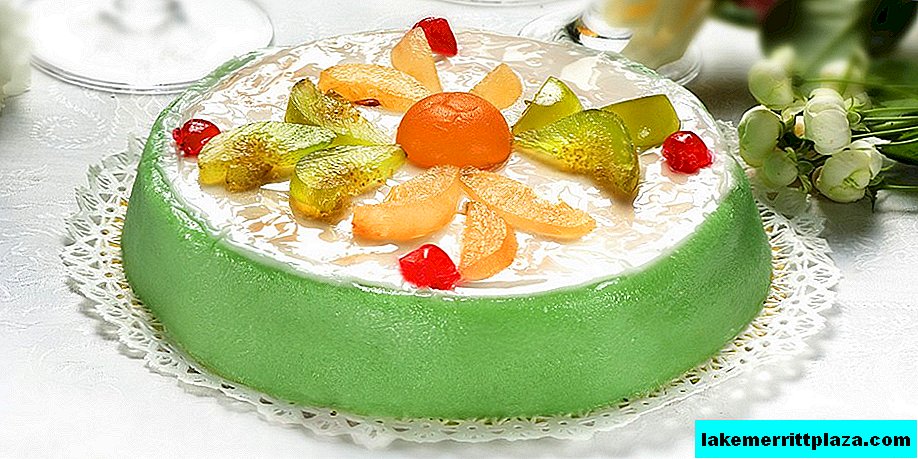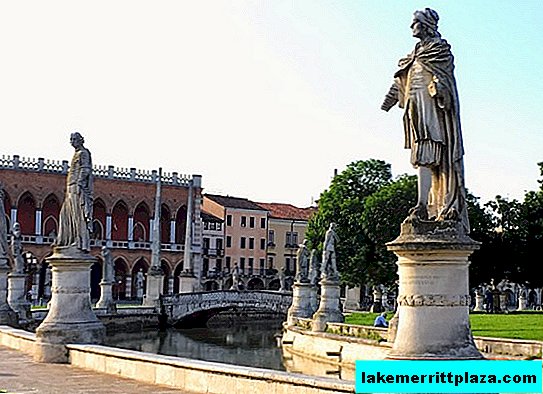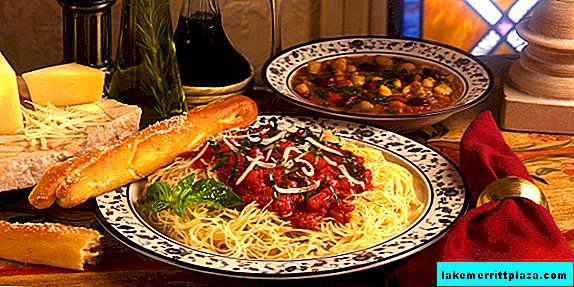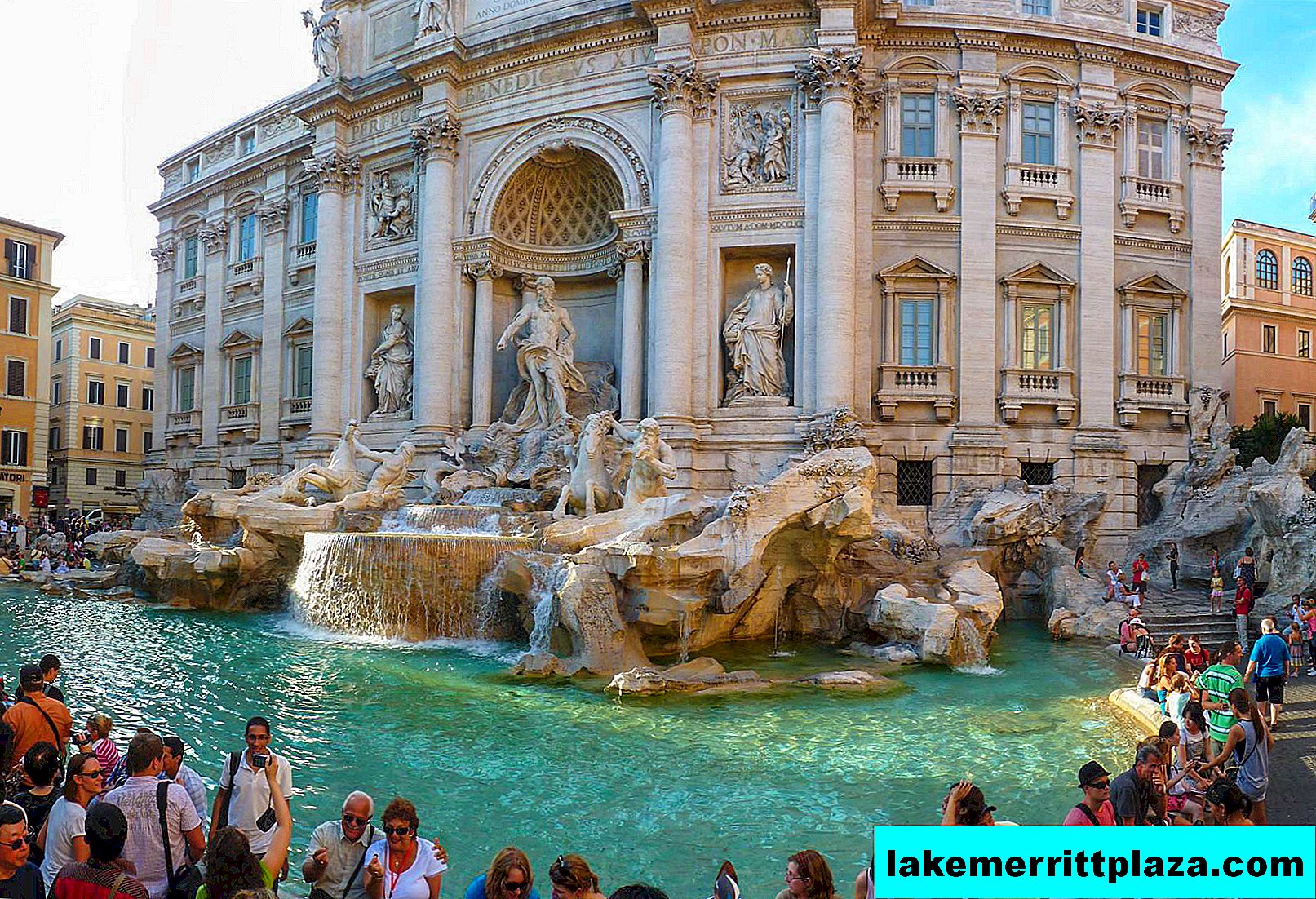Just a 10-minute leisurely walk from the Cathedral of Santa Maria del Fiore, there is a beautiful example of Renaissance architecture - the Strozzi Palace (Italian: Palazzo Strozzi). The building is made in the classical style of the Italian architects "palazzo" and in appearance in many respects echoes the residence of the Medici family - the Palazzo Medici Riccardi (Italian: Palazzo Medici Riccardi). The customer of the construction of the palace was the Florentine aristocrat Filippo Strozzi. The embodiment of Strozzi's plans came to life Giuliano da Sangallo (Giuliano da Sangallo) at the end of the 15th century.
The history of the creation of the Palace of Strozzi
Since the very fact of the emergence of such attractions as the Palazzo Strozzi is inextricably linked with the history of Italy, we will take a short excursion during the prosperity of the Florentine Republic. In the 15th century, several powerful fractions existed in the political horizon of this state. The most powerful antagonists were representatives of the ruling oligarchy (the Strozzi and Albizzi families) and the Medici clan, which was rapidly strengthening its position. Strozzi did not manage to overcome the powerful sphere of influence of the Medici, and by 1435 the aristocrats were forced to move to Naples.

The second coming of the home of Strozzi to his homeland took place in 1466. It was possible to surpass the scorched intriguers and successful politicians in the person of the Medici house only with the help of solid financial investments. A special place in this confrontation was to play the new, sparkling with beauty and luxury residence of Strozzi. In the historical center of Florence, a hefty piece of land was purchased, along with all the buildings.
In the area liberated from old buildings, Piazza Strozzi is located. Subsequently, it was to be decorated with the family castle of a family of Italian nobles.
Wanting to give the future building more power, Filippo Strozzi called on astrologers who calculated the most favorable day to begin construction. The choice fell on August 6, 1492.
The palace project, painstakingly executed by da Sangallo, fell into the hands of the engineer and architect Benedetto da Mayano.
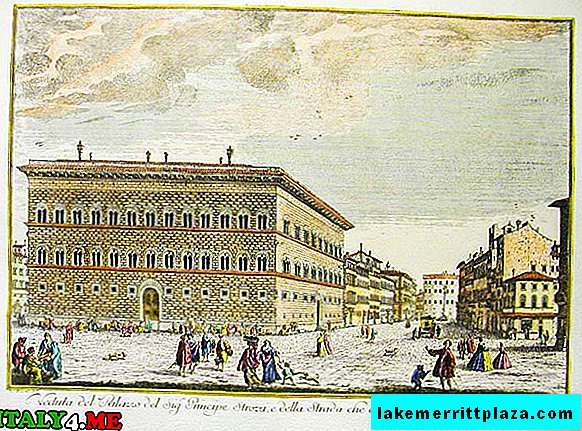
Strozzi's obsession with the idea of superiority over the Medici played a cruel joke. During the development of the appearance of the palace, Filippo longed to get a residence no worse than that of a rival family. As a result, the architectural plan of the Palazzo Strozzi, largely repeats the ideas used by Michelozzo in the construction of the Palazzo Medici Riccardi.

Of course, the Palace of Strozzi impresses with its scale, but from the outside it looks quite simple, if not strictly. Light sand tiles of ruststone cover the building from pavers to the toothed decor near the roof. The Palazzo consists of three floors, the exterior decor clearly divides the building into tiers. The first floor is equipped with small battered windows. But, the next two tiers are decorated with identical rows of double-leaf windows. The entrance portals of the palace look monumental - an arched structure trimmed with marble and rust bars.

Almost forty years were spent on the construction of the Strozzi Palace. The irony of the fate of this residence lies in the fact that Filippo did not wait for her final readiness. The noble Florentine died in 1491, his descendants were engaged in further chores associated with the construction. The Medici did not fail to take advantage of their power and requisitioned an unfinished building, after the death of the rebellious aristocrat. After three decades, the palace still returned to the possession of its rightful owners, the Strozzi family. Thus, the final date for the construction of Palazzo Strozzi is 1538.
The modern history of the Palace of Strozzi
Until 1907, the palace was in undivided use by numerous generations of the house of Strozzi, until the glorious family was interrupted with the death of its last representative - Piero Strozzi. Officially, the palace was transferred to the municipality of the city of Florence only in 1999. Although since 1937, various exhibitions and fashion shows have been repeatedly held in the palazzo building.

Among the most significant events are: showing the collection of Peggy Guggenheim (1949), an exhibition of Florentine art of the 17th century (1986), an exhibition of paintings by Gustav Klimt (1992), an exhibition of works by Botticelli and Filippino Lippi (the most popular exhibition of 2004), works by Cezanne (the most popular event among the museums of Florence in 2007).
In 2006, several leading organizations in Florence joined forces to create a complete management system for such a significant city attraction. Under the management of the Foundation of the Palazzo Strozzi, separate thematic zones were organized on the premises of the palazzo:
- Floor of the Noble (Piano Nobile) - the most significant exhibitions of international scale;
- The Strozzina Center for Contemporary Culture (CCC Strozzina) is a convenient venue for demonstrating various manifestations of contemporary Italian and European art;
- The courtyard of the palace (Courtyard), which successfully combines a place to relax numerous guests of the city, an area where you can eat, and also make a short trip to the history of the Palazzo Strozzi. Also in the courtyard quite often classical, jazz and modern music groups give free performances.
In addition to all of the above, there are currently concentrated under the roof of the palace: the administration of the Palace Foundation, the Institute of Humanities and several cultural communities.
Stepping into the doorway, breathing stone coolness, a modern traveler will find many interesting things in the courtyard of the building. Antique columns support the high arches of the arch, this is what the first tier of the palace looks like from the inside. The courtyard itself is a great place to relax, decorated with small tubs with plants and benches. Renaissance forged lanterns, as well as their modern counterparts, alternate under the arches.
How to get, location
The Palazzo Strozzi stands at the very Piazza Strozzi. Inside are three entrances:
- from Tornabuoni Street (Via Tornabuoni);
- from Strozzi (Via Strozzi);
- from Piazza Strozzi.
The palace was built in the center of Florence, just 200-300 meters from the Cathedral Square, so it’s easy to get to it by various means of transport:
- by bus: any route leading to the city center. The most advantageous stops: Strozzi Palace, station Santa Maria Novella (Stazione di Santa Maria Novella), Cathedral Square (Piazza del Duomo), ul. Tornabuoni (Via Tornabuoni);
- a five-minute walk from the palace is the Santa Maria Novella railway station;
- by taxi or rented car you can get almost close to the points of interest. Indicate the name of the palace or square.
Mode of operation
The most important and interesting exhibitions take place on the first floor of the palace in the Piano Nobile zone. This segment of the palazzo is open daily except Thursday from 9-00 to 20-00. On Thursdays: from 9-00 to 23-00. The cost of visiting depends on the actual at the time of visiting the exhibition. Usually the full ticket price is around 10 euros.
The Strozzina Center for Contemporary Culture is pleased to see guests from Tuesday to Sunday from 10-00 to 20-00. On Thursdays it is open from 10-00 to 23-00, after 18-00 admission to the CCC Strozzina is free. The rest of the time tickets will cost around 2.5 - 3 euros.
You can find out about all the exhibitions and events planned for the near future at the Strozzi Palace, as well as book tickets:
- by phone: +39 055 2469600;
- on the official website of the museum: www.palazzostrozzi.org
You can join the history of Italy and absorb the vibes of modern European art within the walls of a medieval palace. High art framed by Renaissance architecture perfectly conveys the beauty and diversity of Italian culture. Surely you want to see this for yourself!

